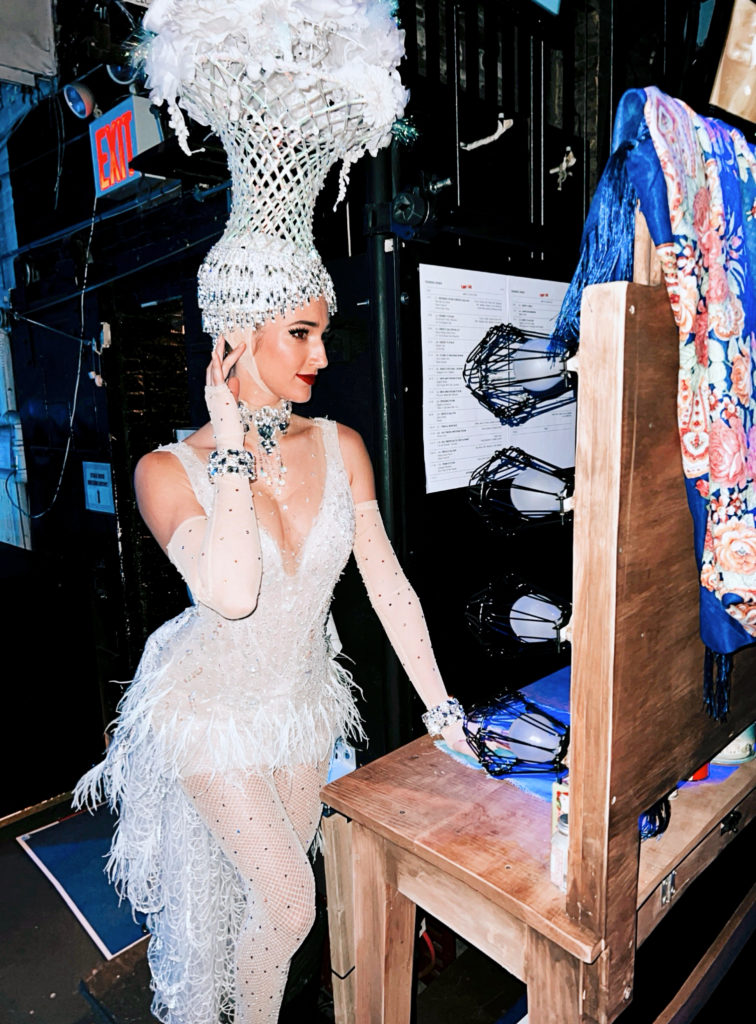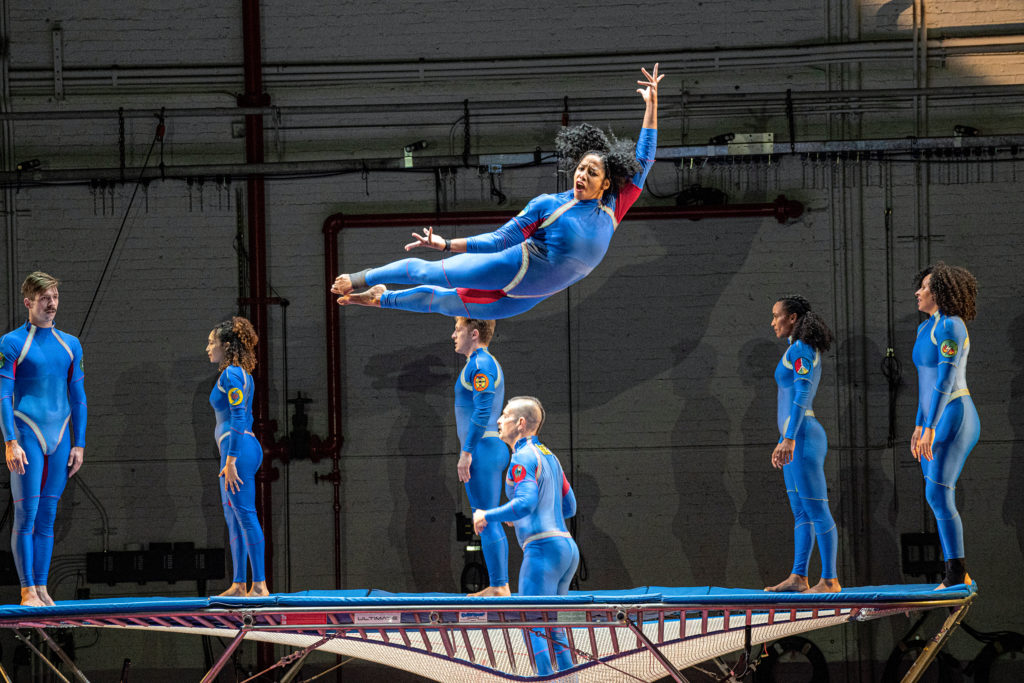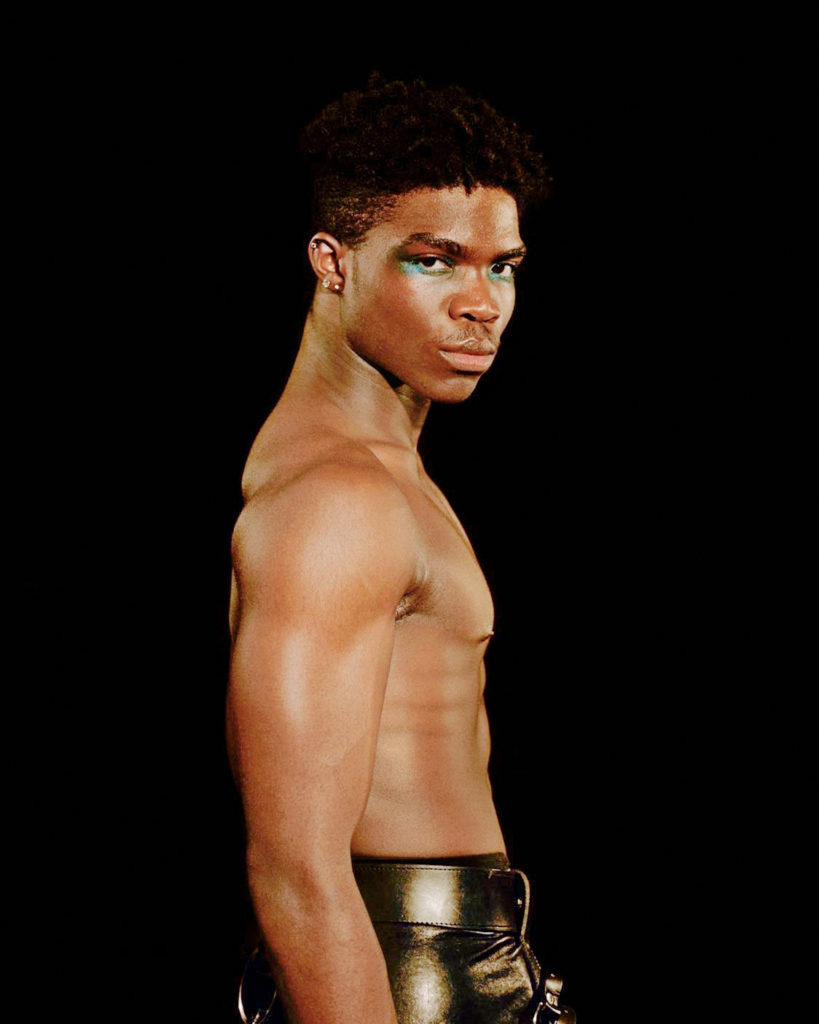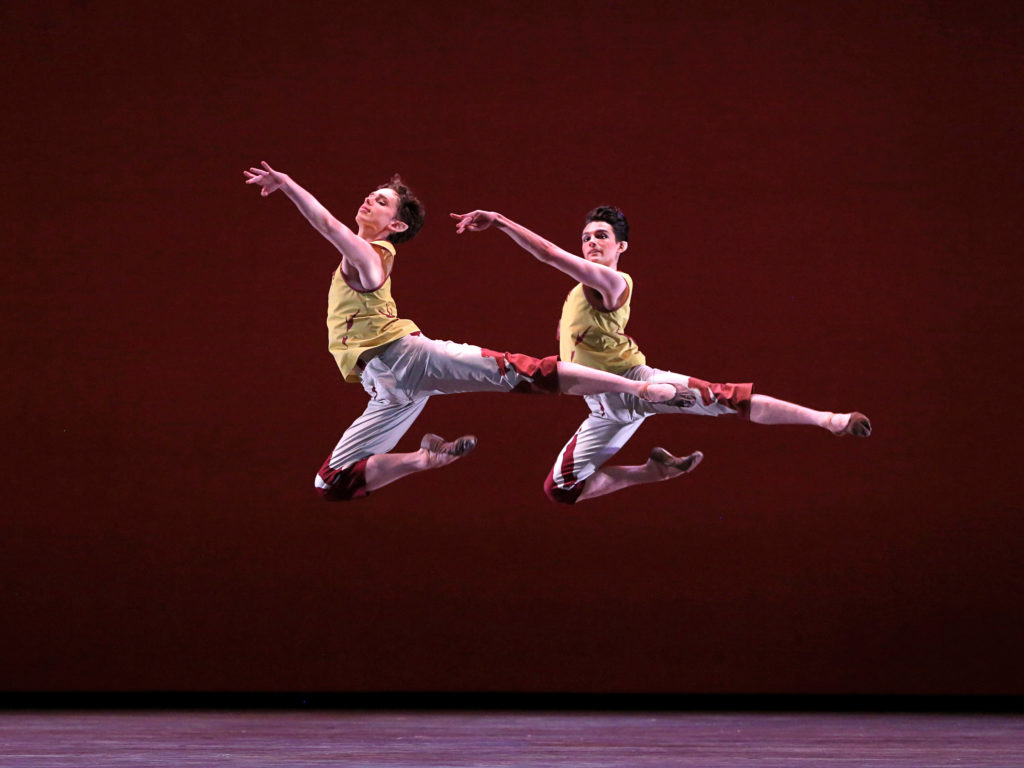Blueprints for Wellness: Four Dancers’ Pandemic Self-Care Strategies
More than two years after the initial COVID-19 lockdowns, performances are getting back up to full speed, and from company work to concert tours to Broadway, dancers are once again leaving their hearts on the stage. This time, however, they’re doing it with a bit more care. “We have gone through something traumatic, and have emerged different in many ways,” says American Ballet Theatre’s Connor Holloway. “In all of that time alone, I started to better understand what I need to be mentally and physically healthy.” Dancers everywhere have found better ways to feel well and happy as they get back to work—here’s how Holloway and three others have created blueprints for wellness in our current world.

Amber Ardolino: Ensemble and Vera in Funny Girl on Broadway
A SUPPORTED RETURN: Amber Ardolino is a big advocate of therapy, and at the height of the pandemic she started using BetterHelp, an online counseling company staffed by licensed professionals. She also began meditating for 15 to 20 minutes daily. “My life is so go, go, go that I need to take the time to sit down and quiet my mind,” says Ardolino, whose previous gigs include swing and understudy roles in Hamilton and Moulin Rouge! The Musical. “It has made my journey back to Broadway much happier and healthier.”
PUTTING HER OWN MASK ON FIRST: “As artists we often sacrifice ourselves for our art,” Ardolino says. “But I’ve learned that it is okay to take a moment, to check in, to not do the audition that doesn’t make you feel good. It’s important to make sure you’re okay.”
EMBRACING THE SILLY SIDE OF LIFE: Ardolino has found that embracing other interests (like TikTok, where she has amassed more than 488 thousand followers), has helped too. “Do other things that bring you joy, so you aren’t so wrapped up in your work and your goals,” she says.
PRIORITIZING BALANCED NUTRITION: When it comes to her diet, Ardolino likes to “have a little bit of this and a little bit of that,” she says. “I eat hearty salads for fuel, so I can sustain my energy for eight shows a week, but I also have Flamin’ Hot Cheetos every night.” “Moderation” is her watchword: “Your body is your moneymaker, but you deserve happiness, too,” she says. “Afford yourself some dietary luxuries.”
HER PRESHOW RITUAL: Ardolino gives herself a good warm-up before each show. “I want to be able to move when I’m 60 or 70 years old,” she says. She turns on a Spotify playlist called “Hip Hop Road Trip,” made up of popular songs from the 1990s, and does what she calls a “cardio jam.” “I twerk and throw myself around,” she says. Ardolino also likes to visit Funny Girl’s resident physical therapist before and after shows.

Cassandre Joseph: STREB Extreme Action performer and associate artistic director
FINDING PEACE: As a member of the extreme-action world for more than 15 years, Cassandre Joseph has had some unique mental hurdles to overcome. The most notable? Dealing with the effects of adrenaline brought on by her high-risk work environment. “Every dancer deals with nerves before a show,” she says, “but that is different from the rush you get standing on a platform 30 feet in the air, shaking like a leaf. When I get home at night, my heart still races and my palms are still sweaty. I have to focus on my breath to calm myself.” Joseph typically breathes in for a few counts, holds her breath for a few counts, and exhales for a few counts to calm herself down. “I take inventory from toe to crown and find where I need to let go of tension.”
BLOCKING OUT THE HATERS: At 41 years old, Joseph is also dealing with emotional hurdles related to growing older. “At my age, people typically retire or start a new career—I have very few peers,” she says. “Many people say I should be retiring too, but my journey in dance has always been full of naysayers. Whether it was because of my socioeconomic background or the demographics that make me who I am, I’ve had pushback.” Joseph watches motivational speeches by her idols, like Muhammad Ali. “His confidence inspires me to tackle my day.” Joseph also finds solace in spending time with her wife and daughter.
PACING HERSELF: Joseph took a slow-and-steady approach to dance post-lockdown—starting with some solo practice at the gym to regain her strength. Still, she was hounded by nagging injuries. “I would squat too low and my knees just couldn’t take it, and I’d have to take two weeks off to recover,” she says. So, she added physical therapy to her prerehearsal ritual and relied on her experience to let her know when she needed to dial things back.
JOINT BOOST: Joseph recently made big changes to her diet. “I went on Whole30 because I could see that the content of my food was affecting my joint health, my stamina and my recovery time,” she says. She also takes supplements like glucosamine, wears compression boots to reduce swelling on her legs and ankles, and gets massages.

Jaxon Willard: Commercial dancer
LOCATION, LOCATION: At 20 years old, Jaxon Willard is living the kind of jet-setter lifestyle that would take a toll on even the most seasoned performer, and his wellness practices are key to managing the demands of so much travel. Between September and December of 2021, he spent three months dancing in Dubai for the United Arab Emirates’ 50th anniversary, went to Los Angeles to film FKA Twigs’ music video for “Tears in the Club,” spent a month in Spain working with Rosalía on her Motomami album, then returned to Los Angeles to perform in Derek and Julianne Hough’s show “Step Into…The Movies” before immediately flying to New York City to perform with Rosalía on “Saturday Night Live.”
HIS SECRET TO STAYING GROUNDED: Willard prioritizes alone time while he’s home in Utah between gigs. He likes to spend some of those quiet moments meditating. “I’m still learning, but I like to light incense, or sage my space,” he says. He also likes to relax in a hot tub.
LETTING GO: Willard finds emotional benefit to non–work-related dancing. “I like to improv in my room, and release whatever stress I’ve been holding on to,” he says. “It’s a space where I don’t need to worry about pointing my toes or performing. I can just check in with my mind and my body, and do the thing I love most.”
STAYING CONNECTED: While on the road, Willard prioritizes keeping in touch with his parents and friends. “I always call my mom before a performance, so she can tune in and watch me,” he says. “It makes me feel happy and connected.” And when he’s in Utah, he makes sure to spend time with friends who add light to his life.
WHOLE-BODY CARE: Willard is a big proponent of rolling out before and after performances, stretching and using rubs like doTERRA’s Deep Blue. His warm-up routine targets his neck, ankles, feet, wrists, shoulders, abs, inner thighs and hamstrings. “Over the years I have gained flexibility, but I have also lost control, so I try to focus on strengthening my muscles in my warm-up,” he says. When physical therapy is offered on a gig, Willard takes advantage of it.

Connor Holloway: American Ballet Theatre corps de ballet
TAKING A BREATHER: During the pandemic, Connor Holloway discovered how therapy and meditation play important roles in mental health. “When I get nervous in class, rehearsal or a performance, my breath tends to get high in my chest and I lose my grounding,” says Holloway, who uses they/them pronouns. “It’s important to be conscious of how (or even if) you breathe while you dance.”
THEIR DAILY MEDITATION PRACTICE: Holloway likes to meditate in the morning before they start their day, in their dressing room or even in the wings before taking the stage. “One technique I especially like is called the Wim Hof method,” they say. “I sit and take 30 really deep breaths in and out through my nose in a rhythm like a metronome. Then I exhale on the final breath and hold it. I’ve gotten up to 2 minutes and 30 seconds so far.” In the wings, Holloway prefers nasal breathing, where they inhale and exhale through alternating nostrils. “It truly does center me.”
PUT IT IN WORDS: Holloway finds solace in journaling. “I wish I were better at it, honestly, but I try to do postshow journaling,” they say. “Even if it’s a sentence, like ‘This show was great because…,’ or documenting my mental state before and after: ‘I was nervous because….’”
SLOWING DOWN: “Pacing yourself is the number-one most important thing you can do for your body after time off [from dancing],” Holloway says—though they admit it’s not necessarily easy to do. “Some dancers were taking private lessons and training every day while the company was off, while others had babies or chased other careers and didn’t dance at all.” Holloway had to set reasonable expectations about when to jump and when to rest during class and rehearsals, regardless of what other company dancers were doing. They paired off with other dancers to work on ankle strengthening and other exercises as they eased back in. “The camaraderie helped me not feel embarrassed about where I was at in my process.”’
A MULTIFACETED APPROACH: Holloway works with a personal trainer, practices daily yoga, runs and takes nondance workout classes.
Haley Hilton is a dancer and writer based in New York City.




